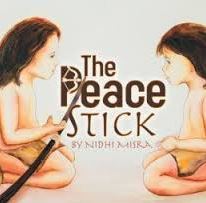A book review
As I enter the faculty room, the cacophony of simultaneous conversation around the lunch table buoys my weary spirit. Soon however, I feel frustrated as to where and how to engage in the discussion. I wish I could discern the tenor or gist of what’s being said by listening carefully to the timber and the words of individuals, but alas, I reconcile myself to remaining mute, or at least to waiting until a pause occurs before I ask “what’s up?”
Meetings are a necessary requirement of activists for peace, environmental preservation and/or social justice. The seemingly invincible powers aligned with militarism, global destruction and financial inequality mean a continual need for not only organizing help, but also a healthy dose of optimism and humor. For those reasons I carry notes on Robert’s Rules of Order and for a long time, a large book full of jokes for all occasions. Recently, I’ve shelved the heavy humor volume and taken along a skinny, children’s book entitled, The Peace Stick, by Nidhi Misra. It provides a concise lesson in how to prevent discussion dysfunction as it encapsulates the tenets of nonviolent communication.
The book is inspired by the Native American legend of the “talking stick”. A stick is used in storytelling circles and council meetings as a way to talk and listen effectively. Anyone holding the “talking stick” is allowed to talk without fear of repercussions. Everyone else honors this sacred speech with silent attention so that time is not wasted in repeating what has already been said. Talking and listening with kindness and respect form a great basis for creating peace and maintaining productive dialogue among children and adults.
In The Peace Stick a story is told by an Indian father to his two small sons about a Chief who tries in vain to manage a noisy storytelling circle. Only after praying for calmness, patience, and peace, is a solution is delivered loudly into the center of the circle. It is a tree branch. “They all looked at the branch in thankfulness that it did not fall on them”.
The chief acknowledges the gift from the tree, and a ceremony is planned to honor the tree for its generosity. The following day, an eagle feather is tied to the stick to encourage peaceful attitudes. Then, a piece of deer hid is added to remind people to be gentle. Finally, rabbit fur is added to underscore the value of respectful listening.
Meetings when the participants practice kindness and respect can be both transformative and productive. Adding “a stick” for peace to my organizing portfolio is a constant reminder of how to keep myself and others communicating in compassionate ways.



